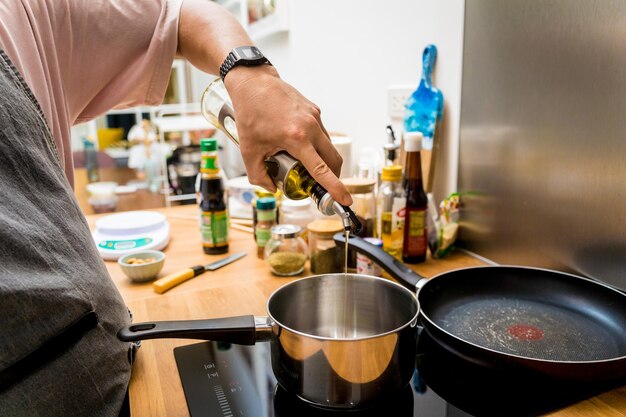How to Verify Your Olive Oil is Real Using the Refrigerator Test
In a world where authenticity matters, knowing whether your olive oil is real and of high quality is essential for both taste and health reasons. The good news? There's a simple home test that might just provide the insights you need—using your refrigerator. This article will guide you through the steps, science, and considerations in determining the genuineness of olive oil with the refrigerator test.
The Importance of Olive Oil Authenticity
Before we delve into testing, it’s crucial to understand why olive oil authenticity matters. Extra virgin olive oil, often considered the gold standard, not only enhances the flavor of food but also boasts a host of health benefits, including antioxidants and healthy monounsaturated fats. Unfortunately, due to high demand, olive oil adulteration with other lower-quality oils is not uncommon. This makes identifying real olive oil a kitchen imperative.
Why Adulteration Happens
Olive oil is in high demand but can be expensive to produce. This creates a tempting profit motive for unscrupulous producers to mix olive oil with cheaper oils, compromising its quality and nutritional profile.
Health and Flavor Consequences
The substitution or dilution of olive oil can lead to reduced health benefits and altered flavors, undermining its culinary value and potentially affecting health outcomes such as heart health benefits typically associated with virgin olive oils.
What is the Refrigerator Test?
Now, onto the main event: the refrigerator test. This at-home method is often suggested as a way to check if your olive oil is pure.
How the Test Works
- Refrigerate It: Place your olive oil bottle in the refrigerator for about 24 to 48 hours.
- Observe: After this period, check the oil’s consistency.
What to Look For
- Cloudiness and Solidification: Real extra virgin olive oil is supposed to become cloudy and may solidify when chilled. This is due to the presence of monounsaturated fats.
- Liquid State: If your oil remains completely liquid, it might be blended with other oils that have different fatty acid compositions.
Limitations of the Refrigerator Test
- Temperature Variances: Different refrigerators might keep different temperatures, affecting consistency.
- Fatty Acid Profiles: Some real olive oils might not solidify completely due to their unique compositions.
- Science Confusion: The test is simple but reduces the complexity of different types of fats found in various oils.
Beyond the Refrigerator Test: Other Indicators of Authentic Olive Oil
While the refrigerator test offers some insights, it shouldn’t operate in isolation. Consider these additional factors for ensuring authenticity:
Understanding Labels
- Certification Seals: Look for labels indicating quality assurance by recognized standards bodies or country of origin certifications.
- Harvest Date: Note the harvest date. Fresher oil often indicates better quality.
Sensory Evaluation
- Aroma and Taste: Quality olive oil often has a fruity, peppery taste and a distinct aroma.
- Color: While not a definitive indicator, authentic olive oil usually has a greenish or gold hue.
Manufacturer and Origin
- Country of Origin: Some regions are renowned for their olive oil. Italian, Greek, and Spanish oils have strong reputations.
- Reputable Brands: Purchasing from well-known brands with good track records can reduce the risk of receiving an adulterated product.
Chemical Testing
Although more scientific, chemical tests provide greater accuracy but should be done by certified laboratories.
Best Practices for Buying Olive Oil
Buying the right olive oil goes beyond conducting after-purchase tests. Here's how you can ensure quality from the start:
Purchase from Trusted Retailers
Look for retailers who specialize in gourmet foods or who have stringent quality checks on their food products.
Opt for Dark Glass Bottles
Exposure to light can degrade olive oil, so dark glass bottles help in maintaining freshness.
Check for Processing Information
Extra virgin olive oil should always be cold-pressed to retain the most nutrients and flavor. Look for this information prominently on the label.
Identifying Quality Through Bottle Indicators
When interacting with the olive oil bottle itself, pay attention to these elements for more clues on quality:
Best Before Date
Quality oil will have this clearly stated, contributing to knowing the oil’s optimal use period.
Seal Integrity
Ensure that the bottle’s seal hasn't been tampered with, and always check for leaks or any unusual residue on the bottle itself.
Handy Tips for Storing Olive Oil at Home
Assisting in preserving the olive oil's quality involves more than just identifying authenticity. Proper storage is crucial.
- Store in a Cool, Dark Place: Heat and light can deteriorate olive oil.
- Seal the Bottle After Use: Oxygen can also degrade the quality, so minimize exposure.
- Transfer to Smaller Bottles: If you buy in bulk, decant into smaller bottles to reduce the frequency of exposure to air each time it's opened.
Summary and Tips for Consumers
🌟 Key Takeaways:
- Refrigerator Test: Indicative but not conclusive; look for cloudiness and solidification.
- Sensory Evaluation: Fruity taste and distinct aroma are signs of quality.
- Label Inspection: Certification and harvest date are crucial indicators.
🛒 Buying Tips:
- Choose dark bottles and check for cold-press processing.
- Buy from reputable brands and trusted retailers.
🗄️ Storage:
- Store in a cool, dark place.
- Keep bottles tightly sealed.
By considering a combination of these methods, you can make more informed decisions about the olive oil you purchase and consume. While the refrigerator test is a quick tool, the integration of sensory evaluation, careful purchasing, and proper storage practices will significantly boost your probability of enjoying authentic, high-quality olive oil. Understanding these nuances not only benefits your taste palate but also supports your well-being as you leverage the health benefits only genuine extra virgin olive oil can provide.
